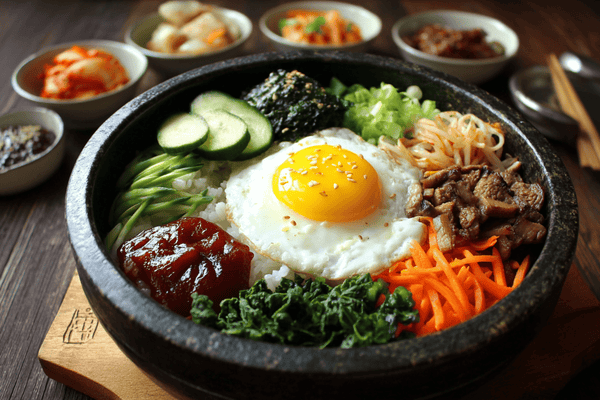
Attention all knife enthusiasts, chefs, and home cooks! Are you tired of dirty, bacteria-ridden knives? Are you tired of being the cause of food poisoning among your friends and family? Well, have no fear, because today we're going to learn the ins and outs of knife sanitation.
Where we'll be learning how to keep our knives cleaner than a whistle, sharper than a razor and safer than a kitten. Now, I know you might be thinking 'this sounds boring', but trust me, it's not as dull as it seems.
Cleaning and sanitizing your knives is like giving them a spa day, and who doesn't love a good spa day? So, grab your favorite knife, and let's get ready to learn how to keep it in tip-top shape and avoid any accidental food poisoning incidents.
Table of contents
Cleaning and sanitizing knives
Cleaning and sanitizing knives is an important aspect of food safety, as it helps to prevent the spread of foodborne illnesses. When knives are not properly cleaned and sanitized, they can become a breeding ground for harmful bacteria, such as E. coli, Salmonella, and Listeria.
These bacteria can then be transferred to food, potentially causing illness in those who consume it. Proper cleaning and sanitizing of knives helps to remove any food particles and bacteria that may be present on the surface of the knife.
This can be done through manual cleaning methods, such as washing the knife in warm water and soap, or through mechanical methods, such as using a commercial dishwasher. After cleaning, it is important to sanitize the knife to kill any remaining bacteria.
This can be done by using a sanitizing solution, such as a chlorine or quaternary ammonium solution, or by immersing the knife in boiling water for a specific amount of time. It is important to note that cleaning and sanitizing are not the same thing.
Cleaning refers to the physical removal of food particles and dirt, while sanitizing refers to the use of chemicals or heat to kill bacteria on the surface of the knife. It is important to do both in order to effectively prevent the spread of foodborne illness.
Furthermore, it is important to have a strict schedule for cleaning and sanitizing knives, especially in commercial kitchens, to ensure that they are always safe to use.
It is also important to train kitchen staff on the proper techniques for cleaning and sanitizing knives, as well as the importance of doing so to prevent foodborne illness.
Techniques cleaning and sanitizing knives
There are several techniques for effectively cleaning and sanitizing knives, including both manual and mechanical methods.
Manual cleaning methods include:
- Washing the knife in warm water and soap: This is the most basic method of cleaning a knife. The knife should be washed in warm water and a mild detergent, and then rinsed thoroughly to remove any remaining soap residue.
- Scrubbing the knife with a brush or scouring pad: This method is useful for removing tough food particles and stains. A brush or scouring pad should be used to scrub the blade, handle, and any other areas of the knife that are dirty.
- Soaking the knife in a cleaning solution: Some cleaning solutions, such as vinegar or baking soda, can be used to soak the knife in order to loosen and remove food particles and stains. The knife should be soaked for a specific amount of time, and then washed and rinsed thoroughly.
Mechanical cleaning methods include:
- Using a commercial dishwasher: This is the most efficient method for cleaning and sanitizing knives. A commercial dishwasher uses high-temperature water and detergent to clean and sanitize the knives. It is important to use a detergent that is safe for use on knives, and to follow the manufacturer's instructions for loading and cleaning.
- Using ultrasonic cleaner: This method uses high-frequency sound waves to agitate cleaning solution to break down dirt and stains. It is a efficient method that can be used for small parts and delicate items like knives.
After cleaning, it is important to sanitize the knife to kill any remaining bacteria. This can be done by using a sanitizing solution, such as a chlorine or quaternary ammonium solution, or by immersing the knife in boiling water for a specific amount of time. It is important to note that sanitizing solutions should be used according to the manufacturer's instructions, and that knives should be rinsed thoroughly after sanitizing to remove any residual chemicals.
It is important to regularly inspect knives for any signs of wear and tear, rust and corrosion, and to sharpen or replace them if necessary, to ensure that they are always safe to use.
How to clean and sanitize a Knife
When cleaning and sanitizing a knife, it is important to focus on several key areas to ensure that the knife is thoroughly cleaned and sanitized. These areas include:
- The Blade: The blade is the primary area where food particles and bacteria can accumulate. It is important to thoroughly wash and scrub the blade to remove any food particles and stains. Special attention should be given to the tip, edge, and any crevices or grooves in the blade where food particles can accumulate.
- The Handle: The handle of the knife is another area that should be cleaned and sanitized. Food particles and bacteria can accumulate on the handle, particularly if it is made of wood or another porous material. It is important to wash and scrub the handle to remove any food particles and stains, paying special attention to any crevices or grooves.
- The Bolster: The bolster is the area of the knife where the blade meets the handle, it is often a place where food particles and bacteria can accumulate. It is important to wash and scrub the bolster to remove any food particles and stains.
- The Tang: The tang is the portion of the knife that extends into the handle and it can be a place where bacteria can accumulate. It is important to wash and scrub the tang to remove any food particles and stains.
It is also important to regularly inspect knives for any signs of wear and tear, rust and corrosion, and to sharpen or replace them if necessary, to ensure that they are always safe to use.
It's important to note that after cleaning and sanitizing, the knives should be stored in a dry and clean place to prevent the growth of bacteria or cross-contamination.
Storing and maintaining a cleaned and sanitized Knife
Proper storage and maintenance of cleaned and sanitized knives is crucial in order to ensure ongoing safety and hygiene in the kitchen. Some tips for proper storage and maintenance include:
- Storing knives in a clean and dry place: After cleaning and sanitizing, knives should be stored in a clean and dry place. This can be a knife block, a knife rack, or a knife drawer. It is important to ensure that the storage area is free of food particles, moisture, and other contaminants that could lead to the growth of bacteria.
- Using protective sheaths or sleeves: When storing knives, it is a good practice to use protective sheaths or sleeves to cover the blades. This will help to protect the knives from damage and reduce the risk of injury when handling the knives.
- Keeping knives sharp: Sharp knives are less likely to cause injury and are more effective in cutting food. Regularly sharpening knives will help to maintain their sharpness and prolong their lifespan.
- Regularly inspecting knives: It's important to regularly inspect knives for any signs of wear and tear, rust, and corrosion, and to sharpen or replace them if necessary, to ensure that they are always safe to use.
- Cleaning and sanitizing knives after each use: It is important to clean and sanitize knives after each use, particularly if they have been used to cut raw meat, fish, or poultry. This will help to prevent the spread of bacteria to other foods and surfaces in the kitchen.
- Keeping a cleaning schedule: It is important to have a strict schedule for cleaning and sanitizing knives, especially in commercial kitchens, to ensure that they are always safe to use. This schedule should be clearly communicated to all kitchen staff and followed consistently.
- Training kitchen staff: It is important to train kitchen staff on the proper techniques for cleaning, sanitizing, and maintaining knives, as well as the importance of doing so to prevent foodborne illness.
Proper storage, maintenance, and sanitation of knives are critical in maintaining food safety and preventing foodborne illnesses. By following these guidelines, you can help ensure that your knives are always clean, safe and ready to use.
Preventing cross-contamination on your knives
Preventing cross-contamination when using multiple knives in a kitchen setting is crucial to maintain food safety and prevent foodborne illnesses. Some best practices to prevent cross-contamination include:
- Using separate knives for different types of food: It is important to use separate knives for different types of food, such as raw meat, fish, poultry, and vegetables. This will help to prevent the spread of bacteria from one type of food to another.
- Cleaning and sanitizing knives between uses: It is important to clean and sanitize knives between uses, particularly if they have been used to cut raw meat, fish, or poultry. This will help to remove any bacteria that may be present on the knife and prevent the spread of bacteria to other foods and surfaces in the kitchen.
- Labeling and color coding knives: Labeling and color coding knives can help to prevent cross-contamination by making it easy to identify which knives should be used for specific types of food. For example, you can use red knives for raw meat, blue knives for fish, and green knives for vegetables.
- Proper storage of knives: Proper storage of knives is essential to prevent cross-contamination. Knives should be stored in a clean and dry place and kept away from other kitchen tools and equipment.
- Training kitchen staff: It is important to train kitchen staff on the proper techniques for cleaning, sanitizing, and maintaining knives, as well as the importance of doing so to prevent cross-contamination and foodborne illness.
- Regularly inspecting knives: It's important to regularly inspect knives for any signs of wear and tear, rust, and corrosion, and to sharpen or replace them if necessary, to ensure that they are always safe to use.
By following these best practices, you can help to reduce the risk of cross-contamination and ensure that your kitchen is a safe and hygienic environment for food preparation
Conclusion
We have discussed the importance of cleaning and sanitizing knives to prevent foodborne illness, the key areas of a knife to focus on during cleaning and sanitizing, and the best practices for preventing cross-contamination when using multiple knives in a kitchen setting. It is important to remember that maintaining proper hygiene and sanitation of knives is crucial for food safety and it's essential for the longevity of the knives. Keeping knives clean and sharp, using separate knives for different types of food, and proper storage are all key factors in maintaining a safe kitchen. By implementing these best practices and keeping knives clean and sanitized, we can ensure the safety of the food we prepare and avoid foodborne illnesses



